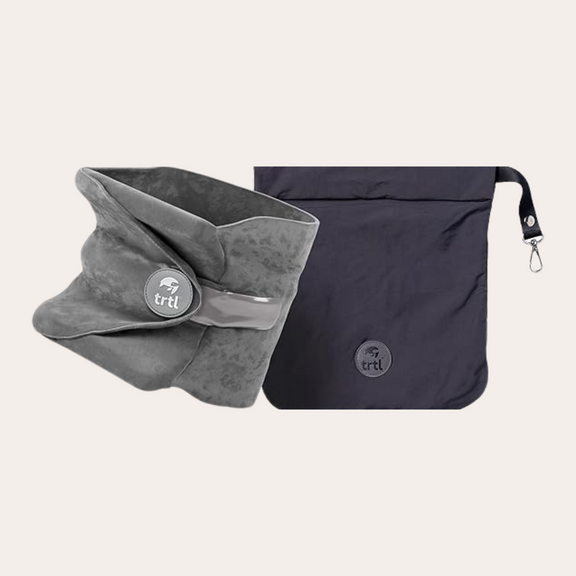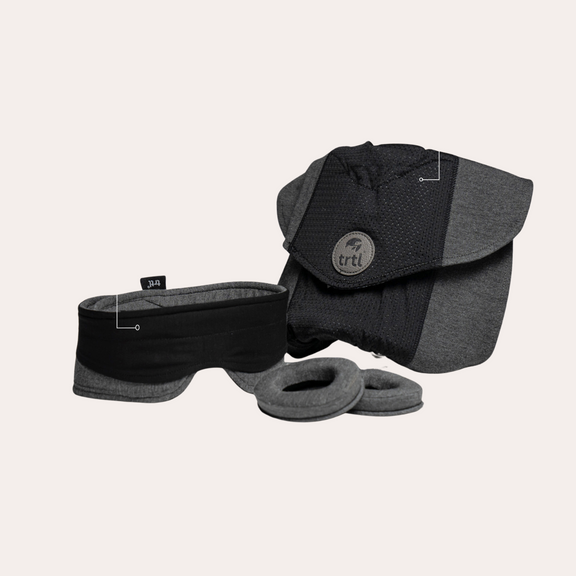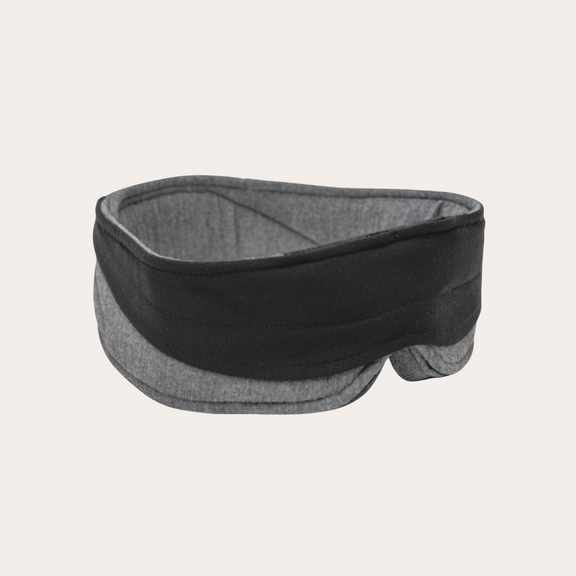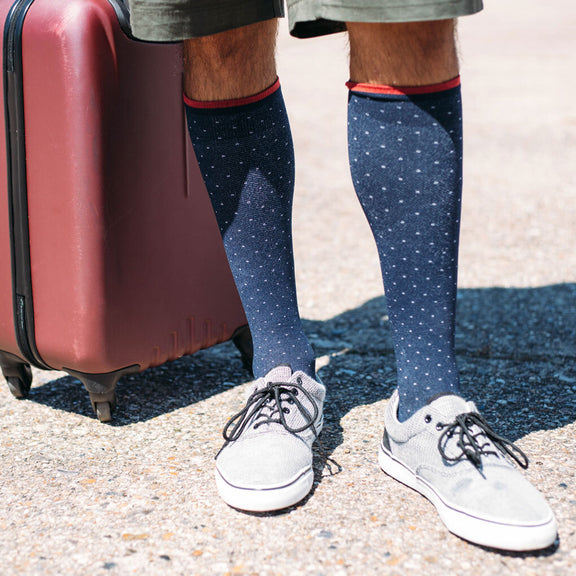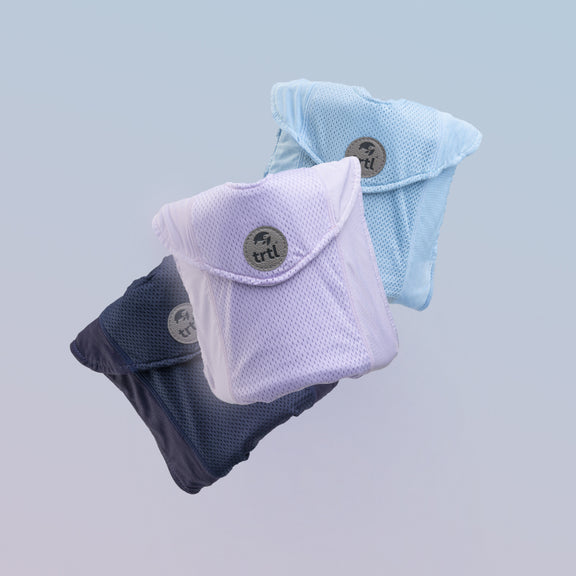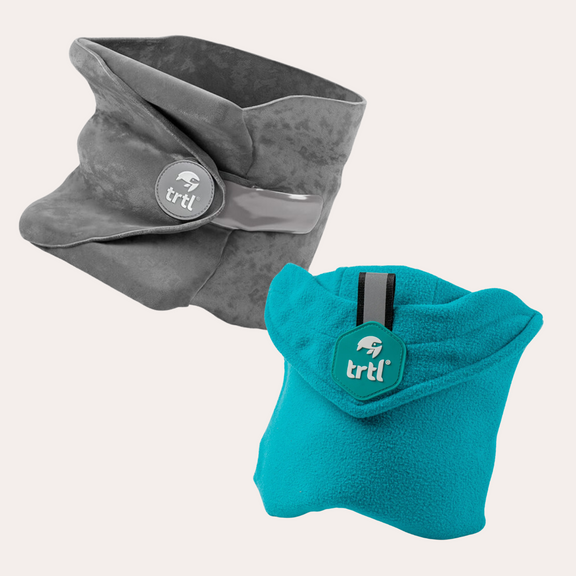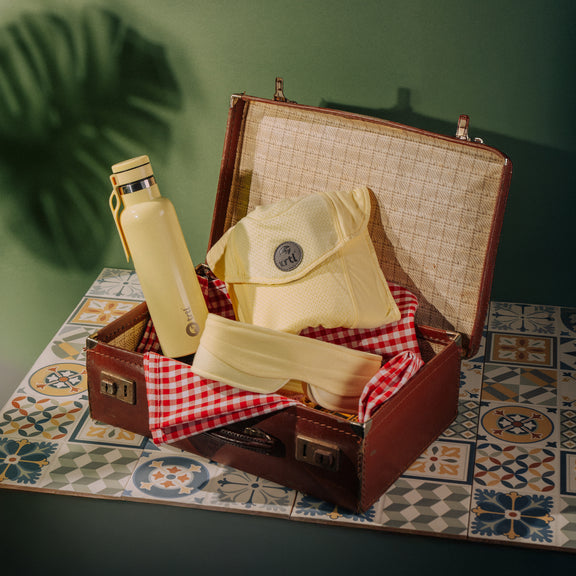Worried about deep vein thrombosis (DVT) while flying, but unsure about how to safeguard yourself? To coincide with our traveler approved Trtl flight socks this guide will have you feeling great long after you've reached your destination.
How To Avoid Deep Vein Thrombosis
Deep vein thrombosis (DVT) is one of the biggest fears among people intending to fly long haul. But scientists have now warned that short haul flights pose a similar threat to your health. Fortunately, there are plenty of ways to reduce your risk when flying – leaving you free to enjoy a worry free and safe journey whatever your destination. Here are some simple steps you can easily take to reduce the risk.
Compression Socks

It makes sense to buy flight socks ahead of your long haul journey, particularly as medical evidence shows the benefits to be overwhelming. Pilots and flight attendants swear by their travel socks.
Trtl Flight socks use a gentle graduated compression (15-21mmHg) to reduce swelling and promote a healthy circulation in your lower legs. Available in a range of sizes, colours and designs, and with flat toe seams to reduce rubbing, Trtl flight socks are proven to keep the blood flowing smoothly. That makes them ideal whether you’re setting out on a short internal flight or going on a longer journey, wearing flight socks will ensure your legs have every chance of staying in shape long after your journey is over.
Exercise

Deep Vein Thrombosis (DVT) can affect anyone sitting in the same position for a long time, whether on a plane, traveling by train or seated for hours on end at your desk in the office.
Therefore, exercising regularly is vital whether you’re flying short or long-haul, going by rail cross-country, or hunched over a computer for hours at a time to meet a work deadline. It’s one of the reasons scientists recommend some form of light exercise every 15 minutes.
It’s also why we are advised to walk around on airplanes at regular intervals. Each time you take a step, the flexing of your ankle aids blood flow to the heart. This is called the calf pump mechanism. As little as five minutes doing simple exercises will increase blood flow by 20 per cent.

You may not feel like getting up to walk around the plane. You might feel a little self-conscious doing so. But when you’re wearing your attractive Trtl compression socks, you can forget what other people think when they see you limbering up in the aisle. Try as many “ankle circles”, “foot flexes” and “calf raises” as you see fit. If it isn’t possible to get up and walk around, perhaps because the person sitting next to you on a flight has fallen asleep, try wiggling your toes and stretching.
If you’re stuck in your seat, you can still move your arms and legs to keep circulation active. Try something as simple as pushing onto your tip-toes or working your calf muscles.
The key, as you’ll have gathered by now, is movement.
Water

It's important to stay hydrated on a flight.
That means drinking water at regular intervals. The Aerospace Medical Association recommends you should drink about eight ounces of water for every hour you’re in the air. This is because flying dehydrates you a lot. That may also be you step off a plane feeling poorly or more fatigued that you expected. The likelihood is that you’re not sick. Instead, you’re probably dehydrated. Not drinking and retaining enough water can make you feel tired, and lead to headaches and nausea. Airplanes drain you of moisture since the humidity onboard, at just 10-20% due to the air circulation system, is said to be drier than the Sahara.
That said, try not to be tempted by sugary or caffeinated drinks directly before or during your flight. Caffeine is a natural diuretic that causes your body to excrete fluids through urination. Sugary drinks increase your energy levels, but only temporarily. They can leave you feeling worse than before. Beware also of carbonated drinks which lead to bloating and cramping.
What is Deep Vein Thrombosis?
Deep vein thrombosis is a blood clot, usually in a lower leg, that can arise after immobility during a long-haul flight. If the clot travels towards the lung, it can cause a pulmonary embolism – a blockage in one of the arteries in your lungs – and lead to collapse and in some cases, it can lead to sudden death. Luckily, there are effective treatments to prevent what is a very real worst case scenario.
Anticoagulation treatment — or blood thinning. This standard treatment may be delivered on a drip to prevent the possible clot from getting larger and to stop new ones forming.
Compression socks. Compression socks steadily squeeze your legs, helping your veins and leg muscles move blood more efficiently. They offer a safe, simple and inexpensive way to keep blood from stagnating during and after general surgery.

Trtl’s maximum comfort flight socks come in a range of fashionable colours and designs and in small, medium and large. Their gentle Compression of 15-21mmHg reduces swelling and promotes circulation in your lower legs. Cushioned support adds comfort for your legs and feet. They are made with Coolmax and knitted with Lycra ® for a comfortable fit and experience.
Leg elevation. Elevating your legs when possible and during the night also can be very effective. Raise the bottom of your bed 4 to 6 inches with blocks or books.
Physical activity. Moving as soon as possible after surgery can help prevent pulmonary embolism and hasten recovery overall.
Taking the steps outlined above will help you to achieve the best journey possible whether flying by plane, train or automobile and have you in good shape when you reach your destination.


